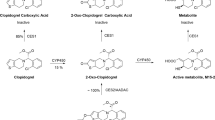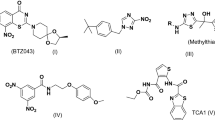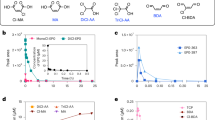Abstract
DICUMAROL1 is widely used clinically for the treatment of thrombosis. Since very little is known about the mechanism whereby dicumarol lowers the prothrombin-level in blood2, it was thought that experiments with dicumarol labelled with carbon-14 might be of value. The dicumarol was prepared by adding an aqueous solution of formaldehyde containing carbon-14, obtained from the Oak Ridge National Laboratory, to a saturated aqueous solution of 4-hydroxycoumarin3. The 3,3′-methylene-C14-bis(4-hydroxycoumarin) so obtained had a specific activity of 6 × 104 counts per minute per milligram, when measured with an end-window type of Geiger–Müller counter and a scale of 128.
This is a preview of subscription content, access via your institution
Access options
Subscribe to this journal
Receive 51 print issues and online access
$199.00 per year
only $3.90 per issue
Buy this article
- Purchase on SpringerLink
- Instant access to full article PDF
Prices may be subject to local taxes which are calculated during checkout
Similar content being viewed by others
References
Campbell, H. A., and Link, K. P., J. Biol. Chem., 138, 21 (1941).
Shapiro and Weiner, “Coagulation, Thrombosis and Dicumarol”.
Lee, Trevoy, Jaques and Spinks, Can. J. Res. (in the press).
Author information
Authors and Affiliations
Rights and permissions
About this article
Cite this article
SPINKS, J., JAQUES, L. Tracer Experiments in Mammals with Dicumarol Labelled with Carbon-14. Nature 166, 184 (1950). https://doi.org/10.1038/166184a0
Issue date:
DOI: https://doi.org/10.1038/166184a0



